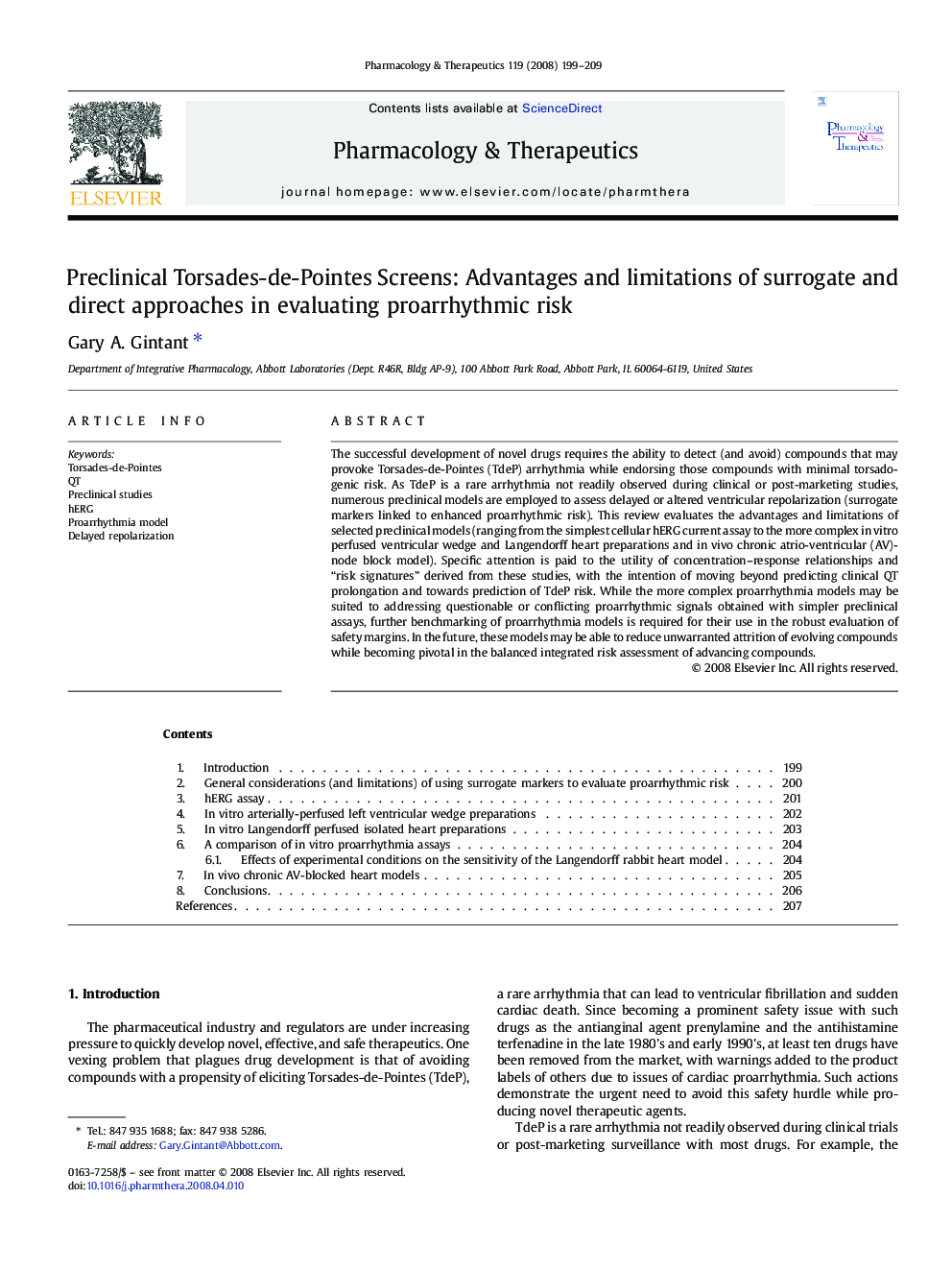| Article ID | Journal | Published Year | Pages | File Type |
|---|---|---|---|---|
| 2563869 | Pharmacology & Therapeutics | 2008 | 11 Pages |
The successful development of novel drugs requires the ability to detect (and avoid) compounds that may provoke Torsades-de-Pointes (TdeP) arrhythmia while endorsing those compounds with minimal torsadogenic risk. As TdeP is a rare arrhythmia not readily observed during clinical or post-marketing studies, numerous preclinical models are employed to assess delayed or altered ventricular repolarization (surrogate markers linked to enhanced proarrhythmic risk). This review evaluates the advantages and limitations of selected preclinical models (ranging from the simplest cellular hERG current assay to the more complex in vitro perfused ventricular wedge and Langendorff heart preparations and in vivo chronic atrio-ventricular (AV)-node block model). Specific attention is paid to the utility of concentration–response relationships and “risk signatures” derived from these studies, with the intention of moving beyond predicting clinical QT prolongation and towards prediction of TdeP risk. While the more complex proarrhythmia models may be suited to addressing questionable or conflicting proarrhythmic signals obtained with simpler preclinical assays, further benchmarking of proarrhythmia models is required for their use in the robust evaluation of safety margins. In the future, these models may be able to reduce unwarranted attrition of evolving compounds while becoming pivotal in the balanced integrated risk assessment of advancing compounds.
